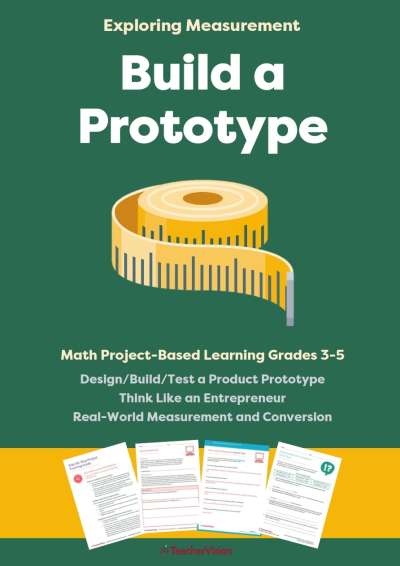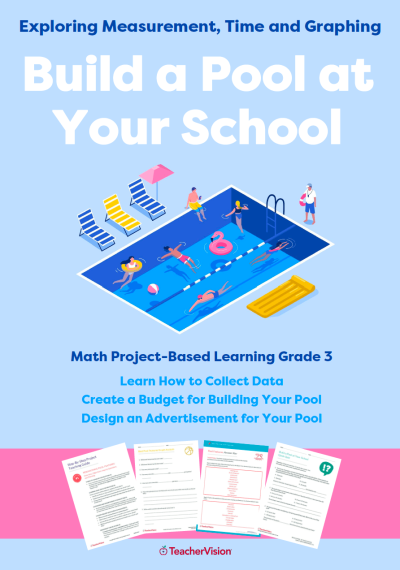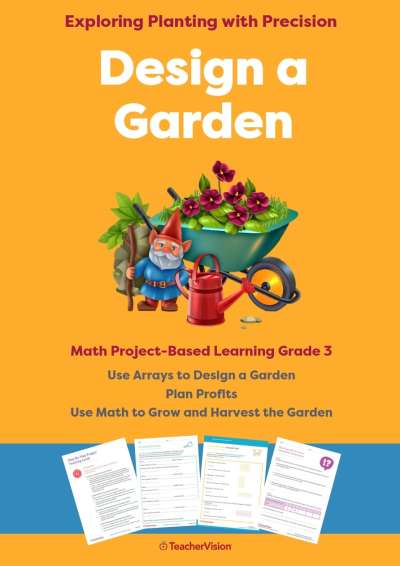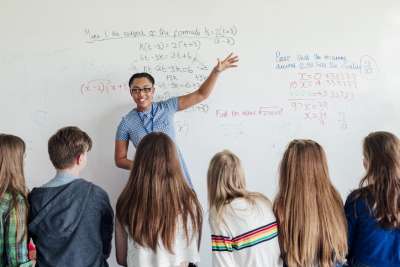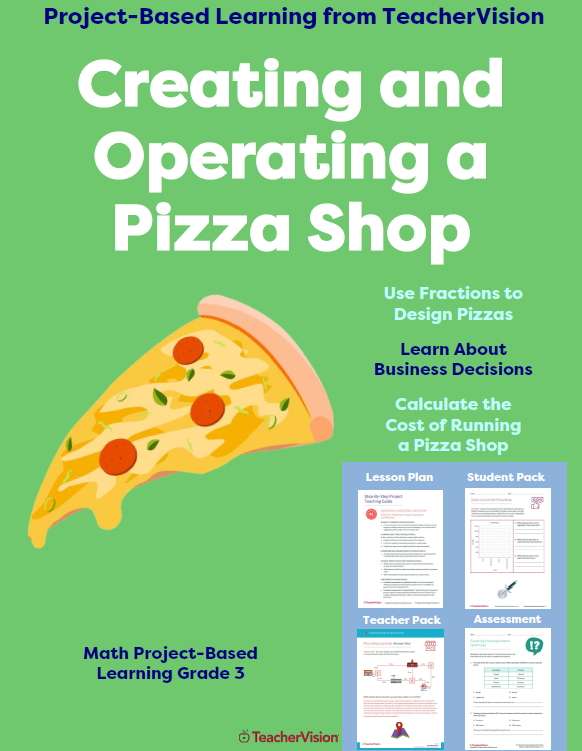
Included with a Premium Membership
Subscribe for instant access to this and every resource on TeacherVision.
Use Fractions, Measurement, Estimation, and Graphing in Real-World Applications While Learning Business Basics with This CCSS-Aligned Math PBL
Take your students through the process of creating and operating a pizza shop - along the way, they will use math skills to learn how to pick a location, develop a floor plan, bake the perfect pizza, handle pricing and promotion, and graph the success of their business.
This PBL unit for 3rd grade math will give your students some insight into entrepreneurship and business while sharpening their math skills on a real-world application. They will use what they know about fractions, measurement, estimating mass and volume, and graphing to start and run a fictional pizza shop - while also building collaboration, communication, and problem-solving skills.
What’s Inside
Packed with fun, hands-on activities, extension and enhancement ideas, opportunities for independent and group work, and engaging inquiry-based challenges, this 54-page project-based unit comes complete with:
- For the Teacher: Engaging math lessons with teacher notes, step-by-step instructions for all activities, assessment guidance, and inquiry questions.
- For Students: A full-color Student Pack complete with all of the printables, slides, photos, and instructions students need for the activities - just print (or share) and teach!
A complete, ready-to-teach Teacher Pack that includes:
- Teacher versions of all the student printables with step-by-step annotations and notes for teaching fractions, measurement, estimation, and graphing;
- Formative and summative assessments, answer keys, and a full project rubric;
- Instructions and guidance for the extension activities and project enhancements;
- Materials and resources lists, links to articles, videos, and research, plus additional resources for lecture and presentation.
What's Included
- Lesson Plan - Step-by-Step Project Teaching Guide
- Milestone 1: Location, Location, Location
- Milestone 2: It's All About the Space
- Milestone 3: Pizza Perfection
- Milestone 4: A Fraction of the Price
- Milestone 5: Measuring Success
Teacher and Student Resources
- Materials Needed for the Projects in this Unit
- Books About Starting a Business
- Picking a Location Activity and Answer Key
- Pizza Shop Location Factors Activity and Answer Key
- Pizza Shop Location Activity and Answer Key
- Milestone #1 Inquiry Question
- What Is a Floor Plan? Activity and Answer Key
- Restaurant Floor Plans Activity and Answer Key
- Pizza Shop Floor Plan Activity and Answer Key
- Milestone #2 Inquiry Question
- Pizza Ingredients Activity
- Exploring Pizza Ingredients Quick Quiz and Answer Key
- Milestone #3 Inquiry Question
- Why Businesses Use Coupons Activity and Answer Key
- Fractional Coupons Activity and Answer Key
- Milestone #4 Inquiry Question
- Pizza Shop Costs Writing Activity
- Daily Costs of My Pizza Shop Activity and Answer Key
- Milestone #5 Inquiry Question
- Creating and Operating a Pizza Shop Summative Assessment and Answer Key
- Creating and Operating a Pizza Shop Project Rubric
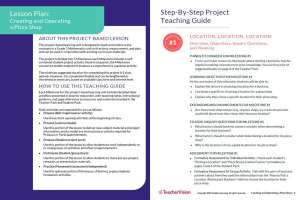
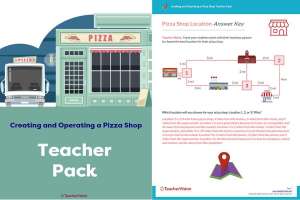
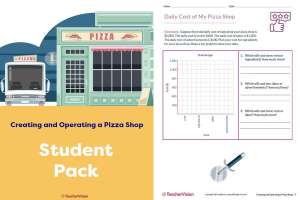
OVERVIEW:
This project-based learning lesson is designed to support and reinforce the concepts in a Grade 3 math unit on using fractions, measurement, estimation of mass and volume, and graphing data to solve real-world math problems. It is built around 5 inquiry-based milestones that incorporate cross-curricular hands-on projects, formative and summative assessments, independent and group activities, and extensions.
STUDENT/GROUP OUTPUT:
In the course of this project-based learning unit, students will:
Use research and critical-thinking skills to select an ideal pizza shop location;
Use measurement skills to design a pizza shop floor plan;
Use fractions, estimation, addition, and subtraction to develop and portion a list of perfect pizza ingredients;
Use fractions, addition, and subtraction to understand how restaurants benefit from using coupons
SUGGESTED SUBJECT PREREQUISITES:
Students should have background knowledge of addition, subtraction, multiplication, division, fractions, measurement, estimation of volume and mass, and graphing as part of this project, and instructional materials for providing refreshers and instruction are included in the Teacher Pack.
SEQUENCE AND PACING:
This project-based unit is divided into 5 milestones. The minimum suggested duration for completing this project-based unit is 5 class periods. However, the unit is completely flexible and can be lengthened or shortened as necessary or desired, based on available class time and interest level.
TECHNOLOGY RESOURCES (suggested):
Internet access
STANDARDS ALIGNMENT
MILESTONE #1
• CCSS.MATH.CONTENT.3.NF.A.1 - Understand a fraction 1𝑏 as the quantity formed by 1 part when a whole is partitioned into b equal parts; understand a fraction 𝑎𝑏 as the quantity formed by a parts of size 1𝑏.
• CCSS.MATH.PRACTICE.MP2 - Reason abstractly and quantitatively.
• CCSS.MATH.PRACTICE.MP3 - Construct viable arguments and critique the reasoning of others.
MILESTONE #2
• CCSS.MATH.CONTENT.3.MD.C.7.D - Find areas of rectilinear figures by decomposing them into non-overlapping rectangles and adding the areas of the non-overlapping parts, applying this technique to solve real-world problems.
• CCSS.MATH.PRACTICE.MP6 - Attend to precision.
MILESTONE #3
• CCSS.MATH.CONTENT.3.NF.A.1 - Understand a fraction 1𝑏 as the quantity formed by 1 part when a whole is partitioned into b equal parts; understand a fraction 𝑎𝑏 as the quantity formed by a parts of size 1𝑏.
• CCSS.MATH.CONTENT.3.MD.A.2 - Measure and estimate liquid volumes and masses of objects using standard units of grams (g), kilograms (kg), and liters (l). Add, subtract, multiply, or divide to solve one-step word problems involving masses or volumes that are given in the same units, e.g., by using drawings (such as a beaker with a measurement scale) to represent the problem.
• CCSS.MATH.PRACTICE.MP1 - Make sense of problems and persevere in solving them.
MILESTONE #4
• CCSS.MATH.CONTENT.3.NF.A.1 - Understand a fraction 1𝑏 as the quantity formed by 1 part when a whole is partitioned into b equal parts; understand a fraction 𝑎𝑏 as the quantity formed by a parts of size 1𝑏.
• CCSS.MATH.PRACTICE.MP7 - Look for and make use of structure.
MILESTONE #5
• CCSS.MATH.CONTENT.3.MD.B.3 - Draw a scaled picture graph and a scaled bar graph to represent a data set with several categories. Solve one- and two-step "how many more" and "how many less" problems using information presented in scaled bar graphs. For example, draw a bar graph in which each square in the bar graph might represent 5 pets.
• CCSS.MATH.PRACTICE.MP5 - Use appropriate tools strategically.


